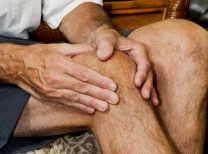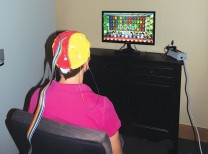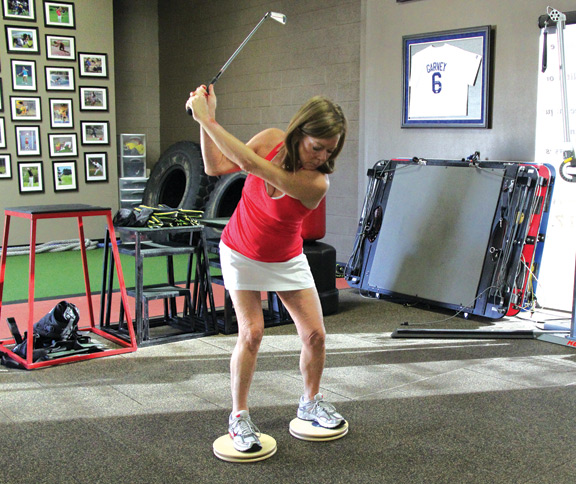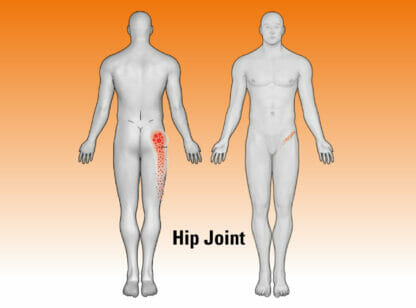Hip fractures send more than 300,000 Americans age 65 and older to the hospital each year. While hip fractures can be treated, the injury can lead to severe health problems and reduced quality of life.
Most hip fractures occur because of a fall, especially among adults over the age of 65 with osteoporosis, a condition in which bones become weak. In addition to advanced age and osteoporosis, other risk factors associated with hip fractures include lack of calcium and vitamin D in the diet when younger, physical inactivity, tobacco and alcohol use and certain medications. Environmental factors such as loose rugs or a cluttered living space could increase the chance of falling.
A hip fracture causes pain in the outer upper thigh or groin area as well as the inability to bear weight on the side of the injury. The hip area may become stiff, show signs of bruising or swelling, and a significant level of discomfort could occur after any attempt to rotate or flex the hip. Most hip fractures are diagnosed following an X-ray, which also shows where the fracture occurred in the hip.
Treatment is determined based on the patient’s overall health and age as well as the location and severity of the fracture. Most hip fractures are treated surgically using one of three methods:
- Inserting metal screws into the bone, if it is properly aligned, to hold it together as it heals.
- Replacing part of the femur, the long bone that extends from the pelvis to the knee. This method, called a partial hip replacement, calls for removing the head and neck of the femur and replacing them with a metal prosthesis.
- Replacing the upper femur and pelvic bone socket with a prosthesis. This is called a total hip replacement.
Patients typically do better if they undergo surgery soon after the hip fracture occurs. They may be encouraged to get out of bed the day after surgery with help from a physical therapist, who also will work with patients to help them regain strength and start walking again. After a hip fracture, most patients are hospitalized for approximately one week and may then be either discharged home or referred to a nursing home if they are unable to live independently. Physical therapy rehabilitation usually takes approximately three months.
People at risk for hip fractures can take the following steps to reduce their chances of falling:
- Men and women over the age of 50 should make sure they get enough vitamin D and calcium in their diet.
- Engage in weight-bearing exercise to help strengthen bones and prevent falls.
- Avoid excessive amounts of alcohol and do not smoke.
- Wear shoes with non-skid soles and avoid high heels and shoes like sandals and bedroom slippers that flop when you walk.
- Check your home for trip hazards like throw rugs, electrical cords and clutter.
- Make sure your home and outside walkways are well-lit so you can see where you are walking.
- Talk to your doctor or physical therapist about whether assistive devices may be needed to help you keep your balance.
For a physician referral, please call (844) 946.7846.











































Comments (0)